Don Curry in Armenia
ที่ตีพิมพ์: 28.06.2023
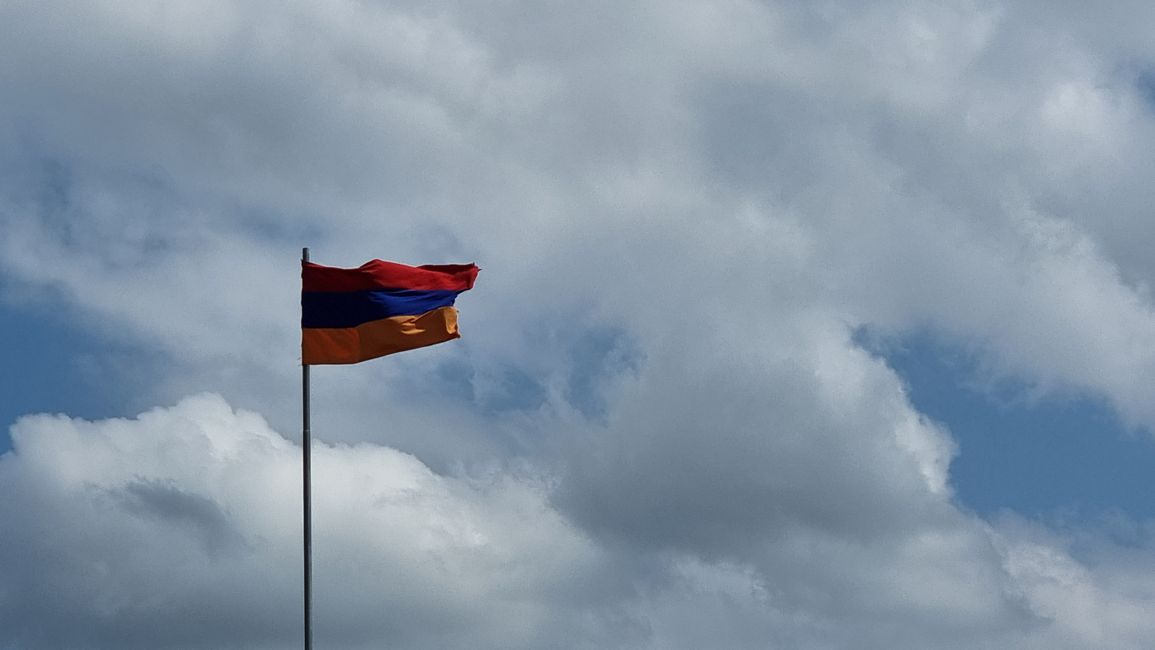
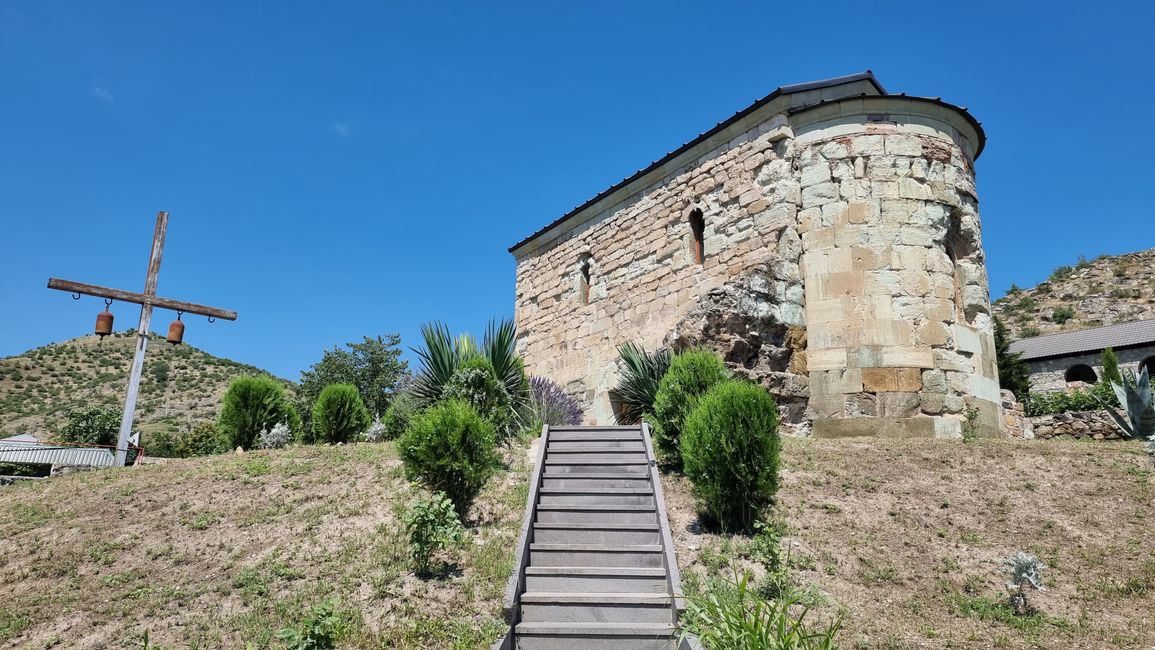
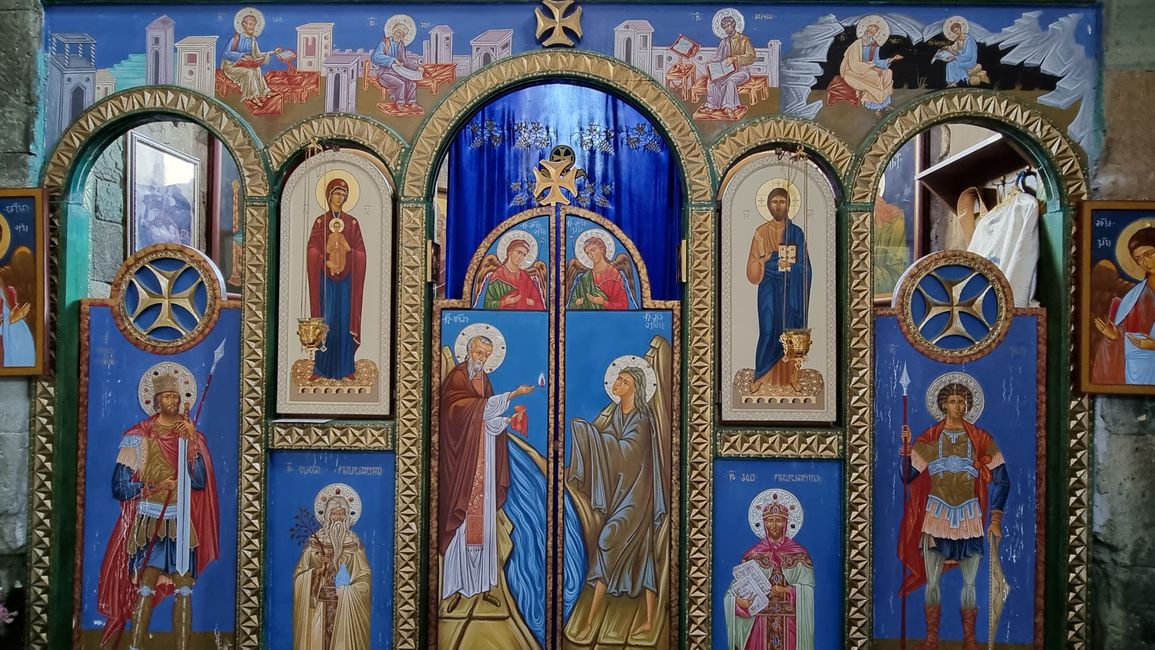
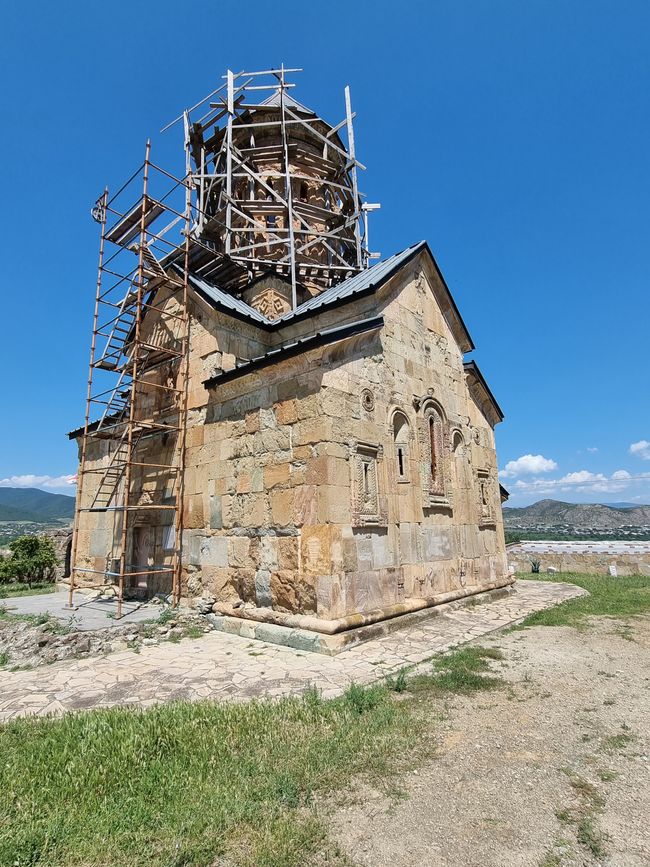
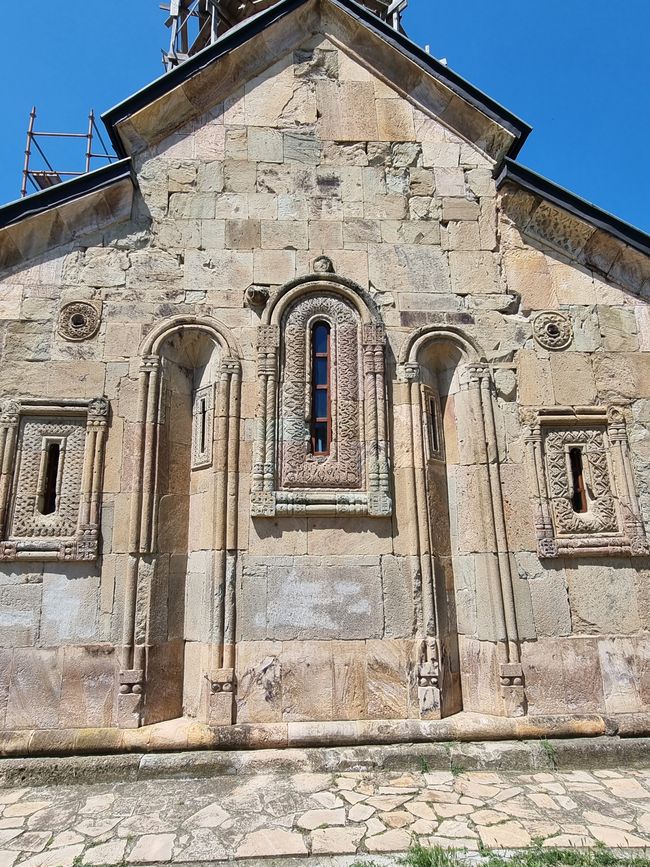
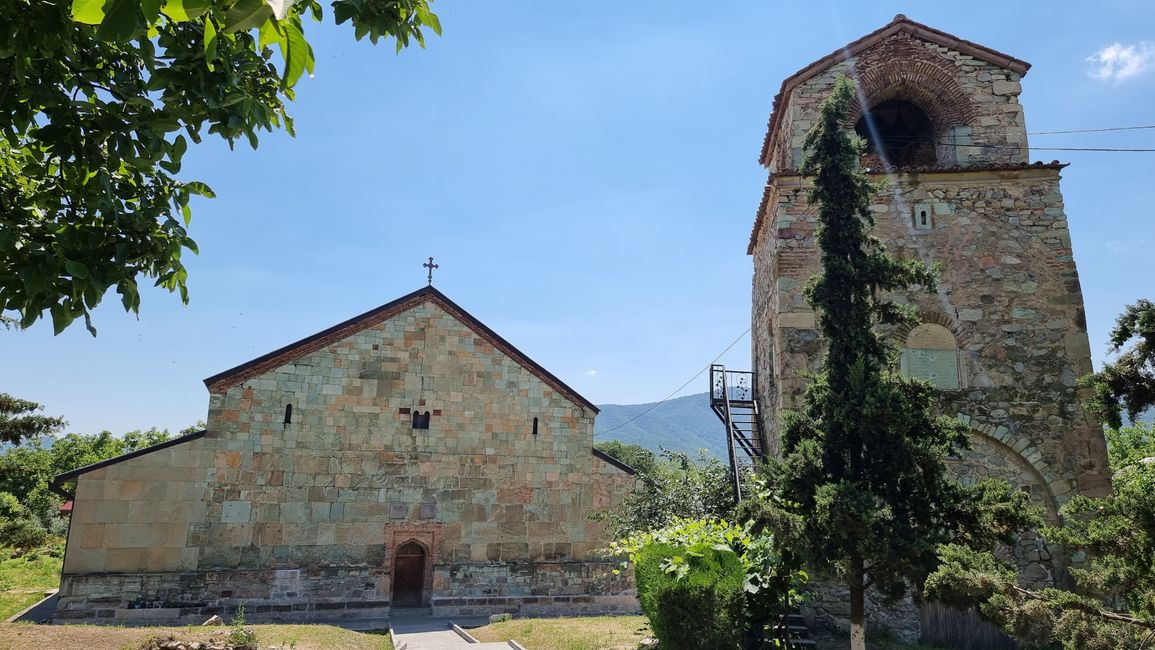
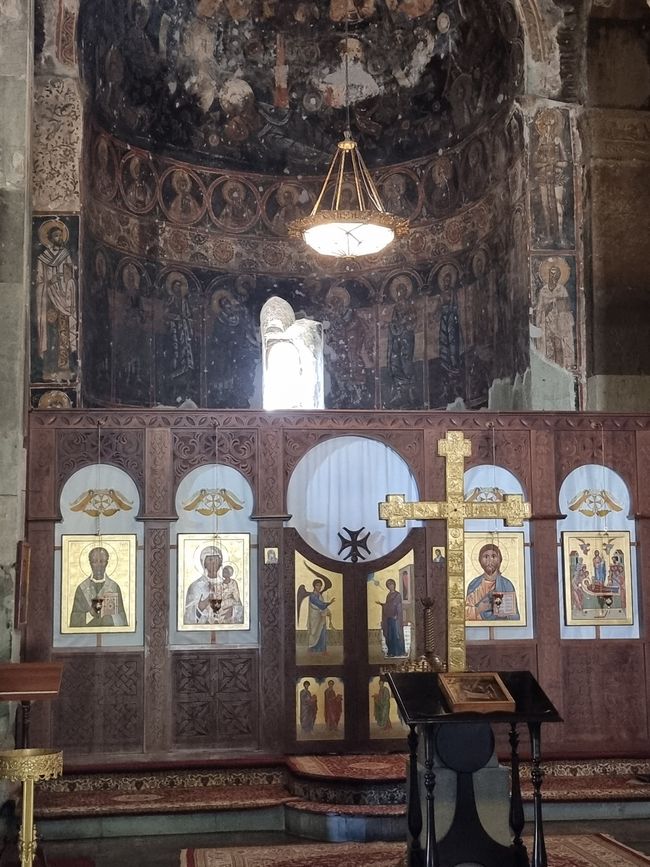
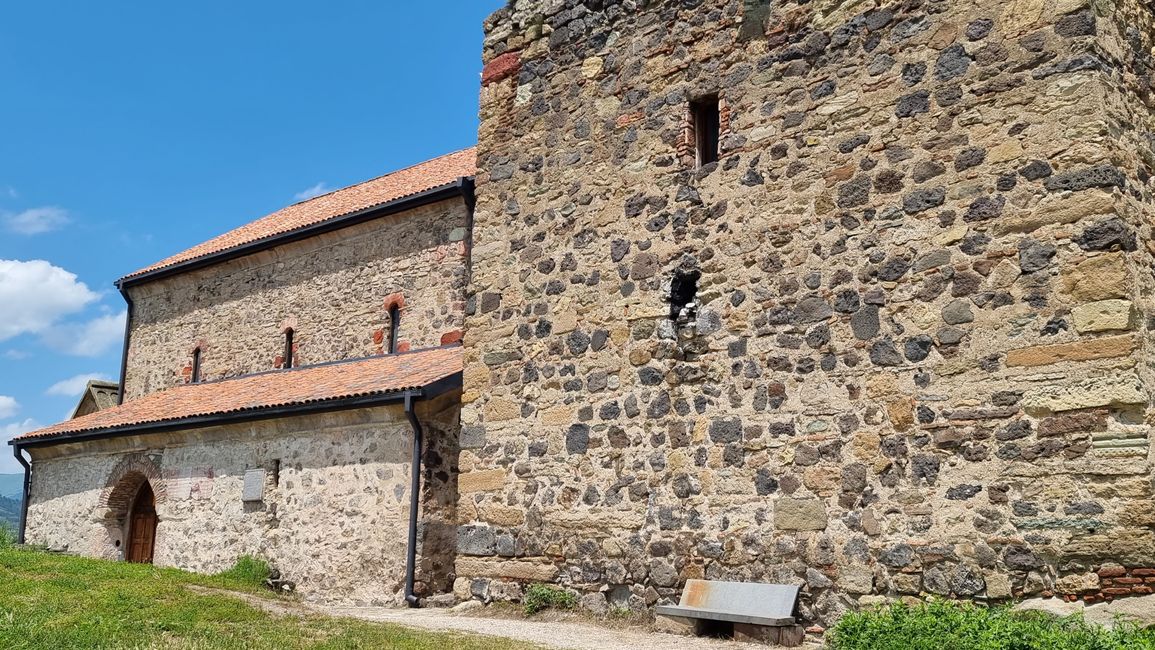
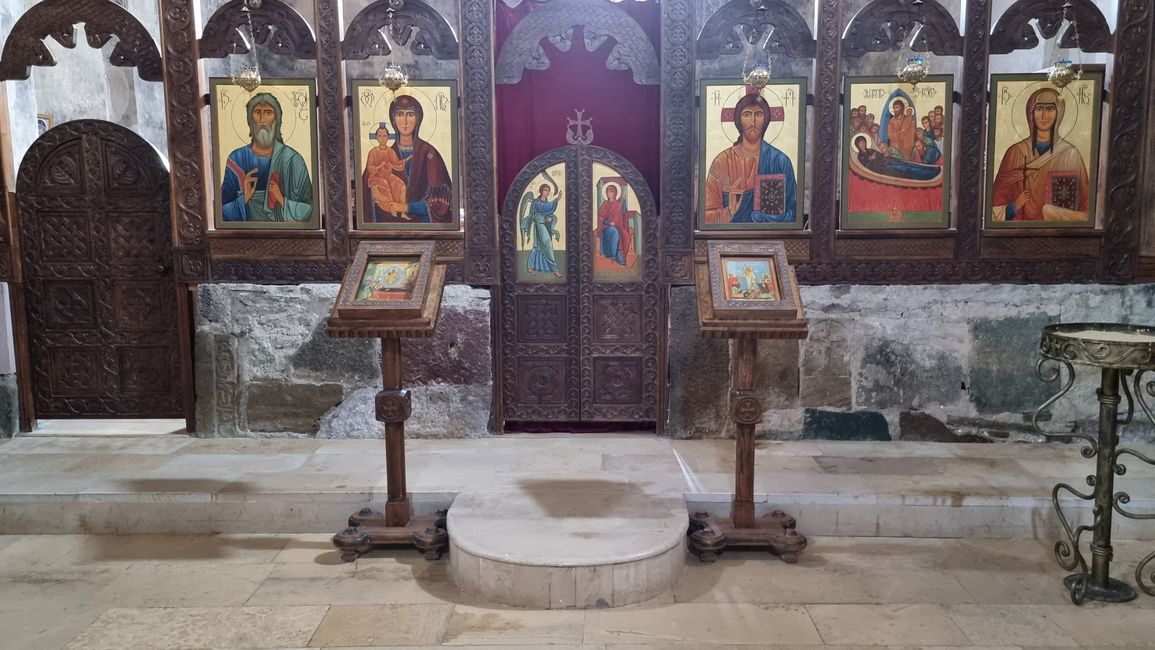
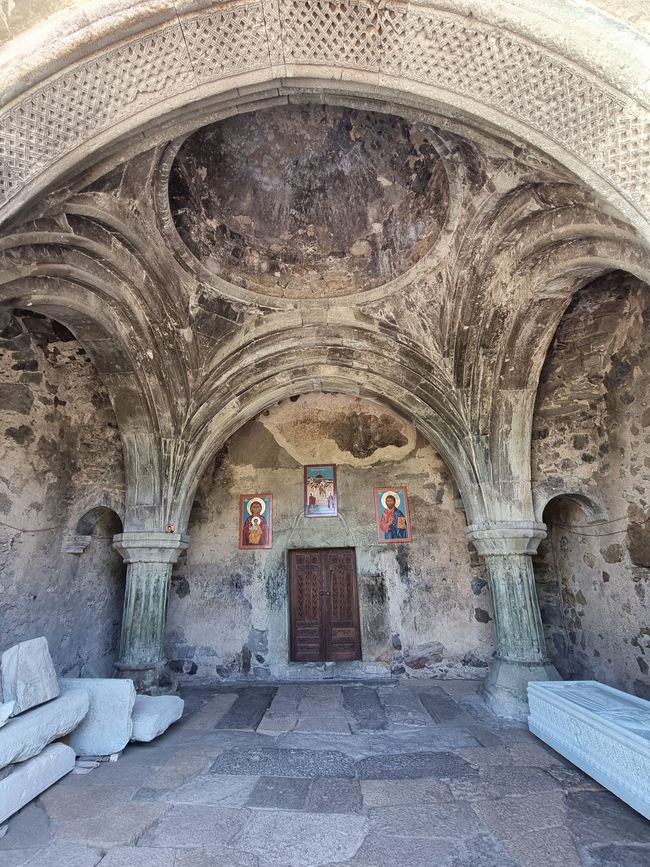
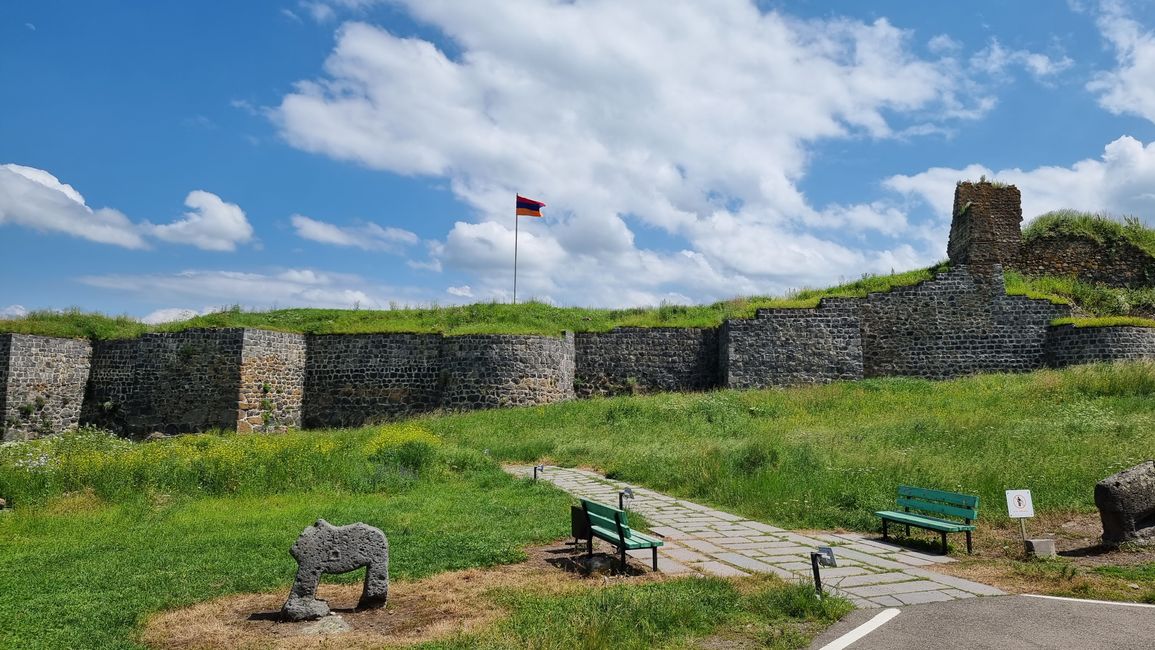
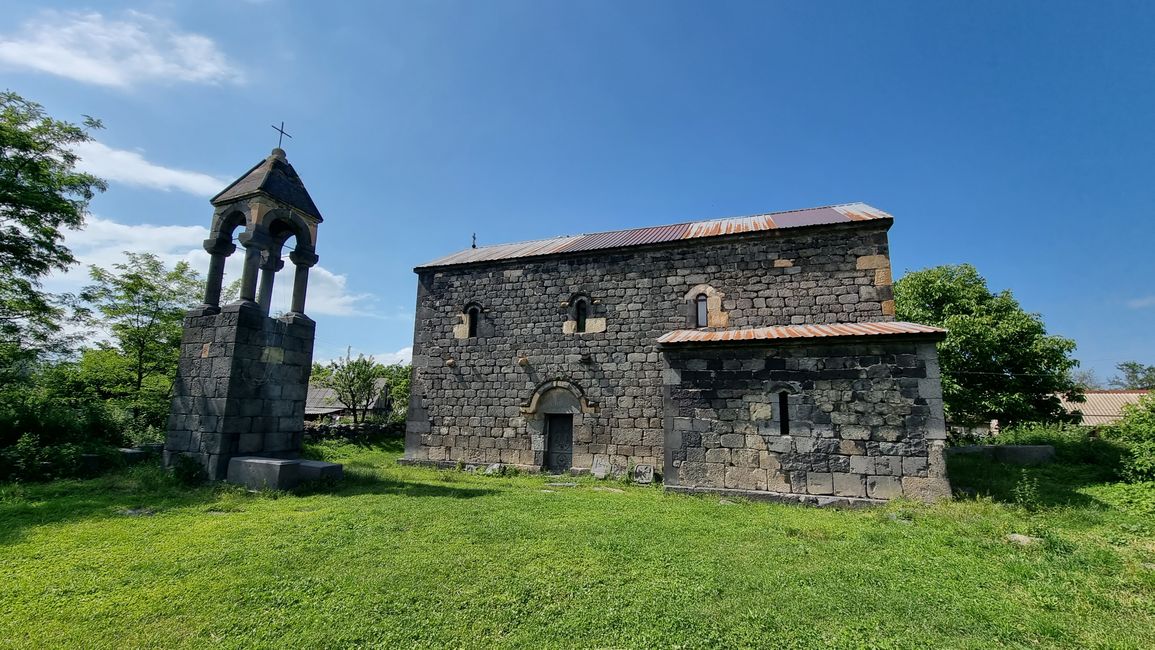
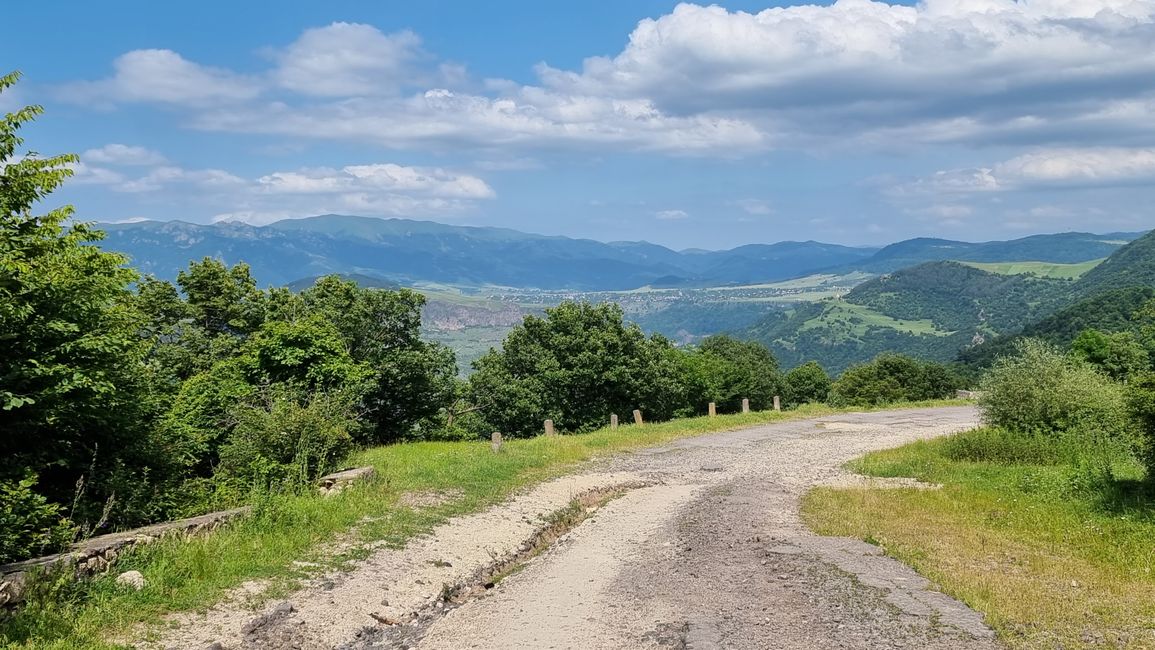
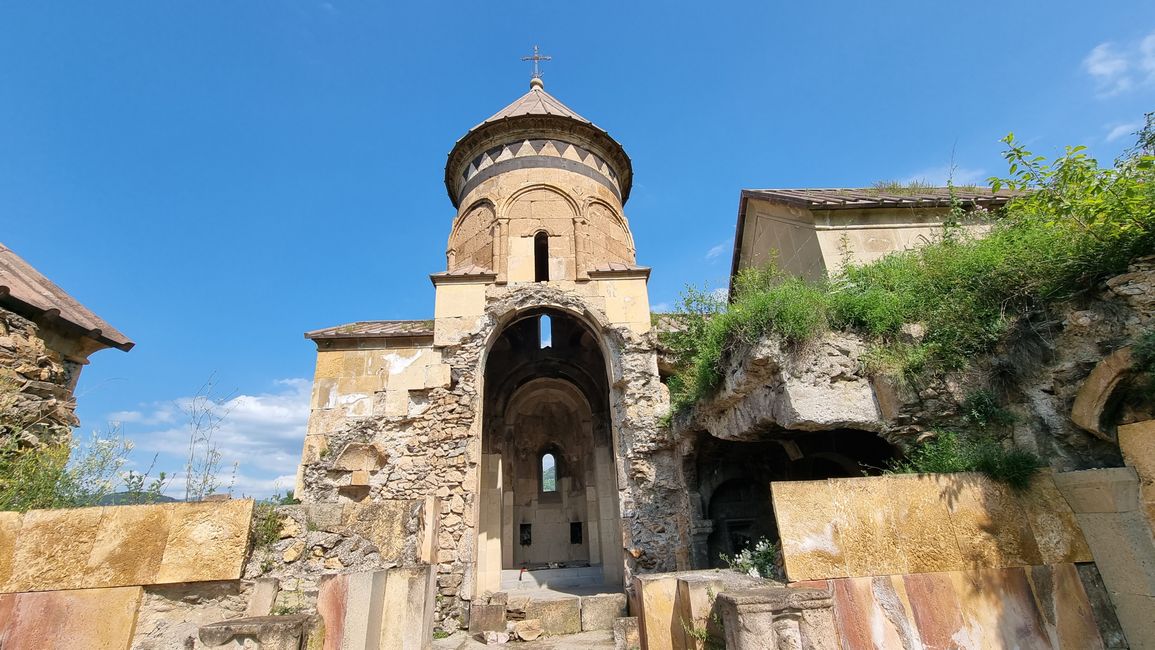
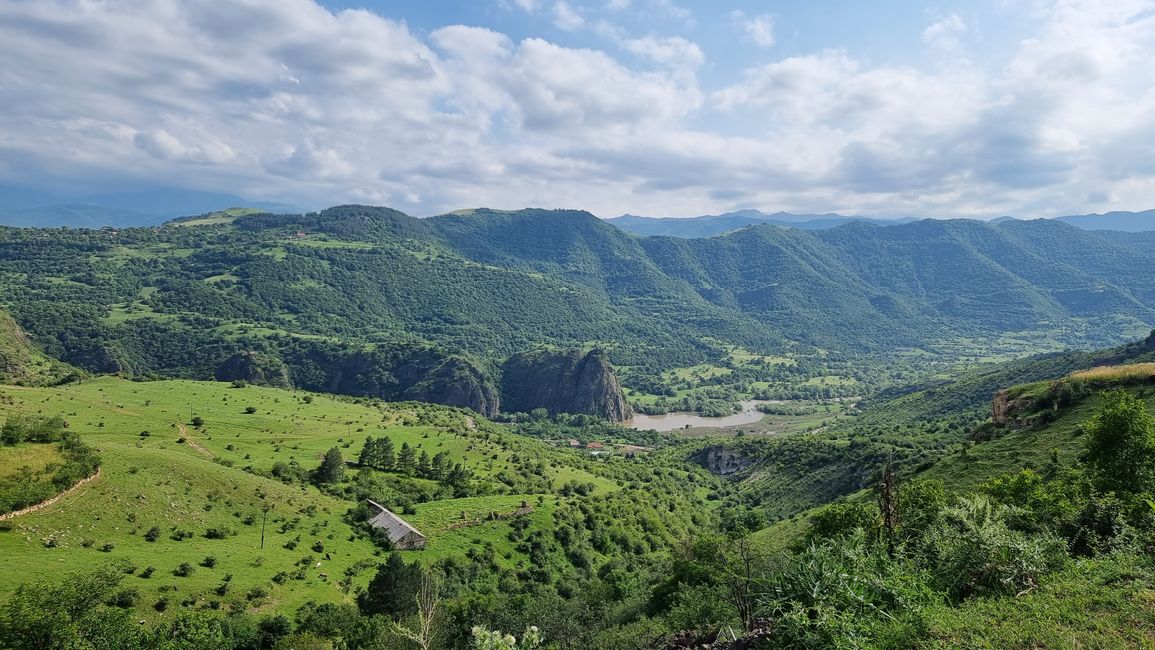
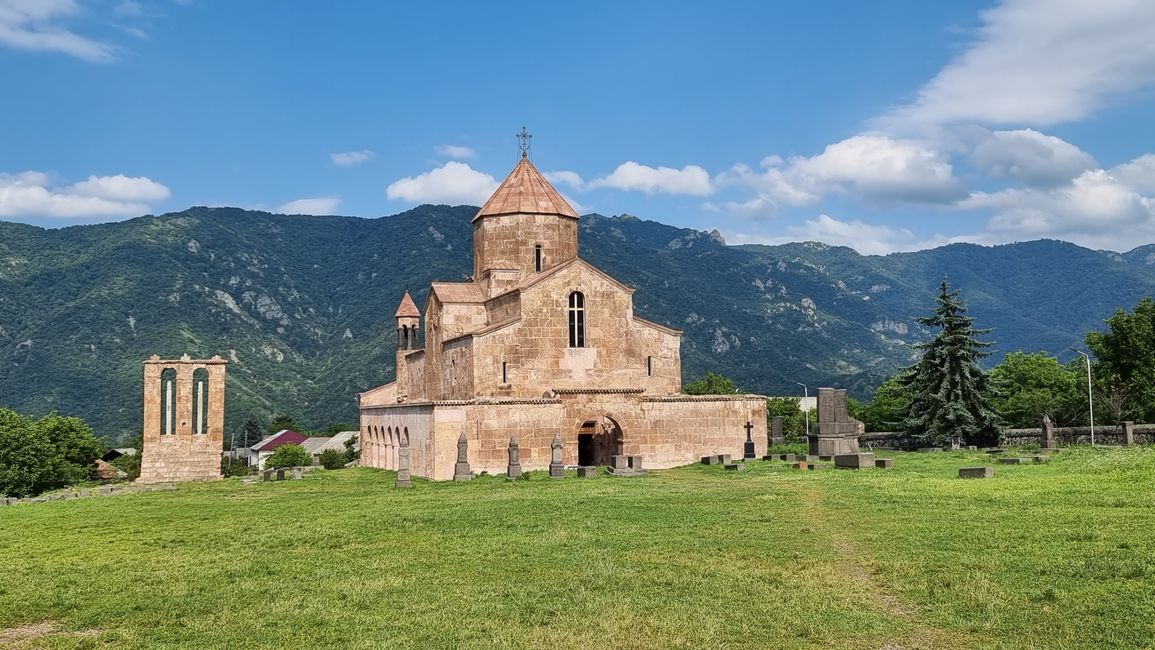
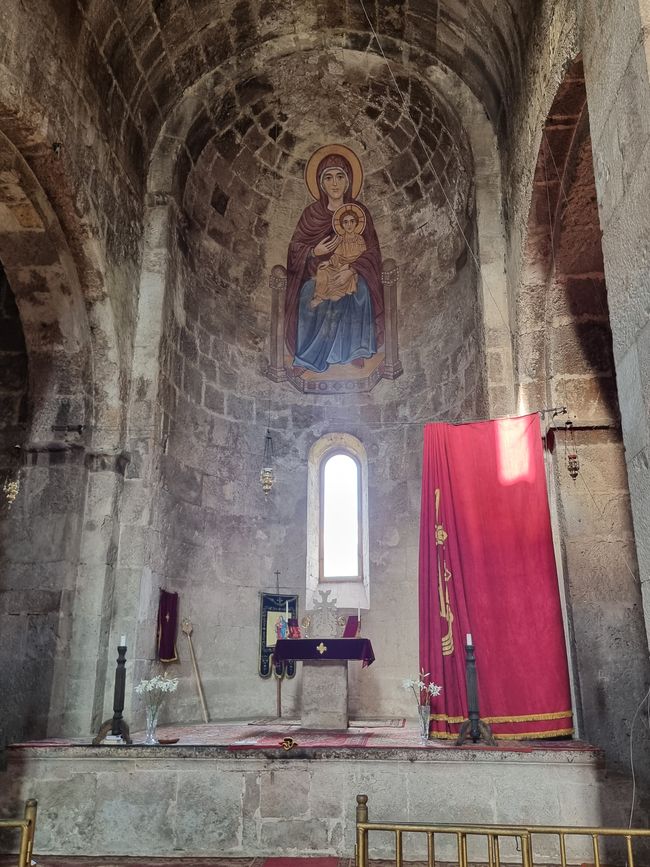
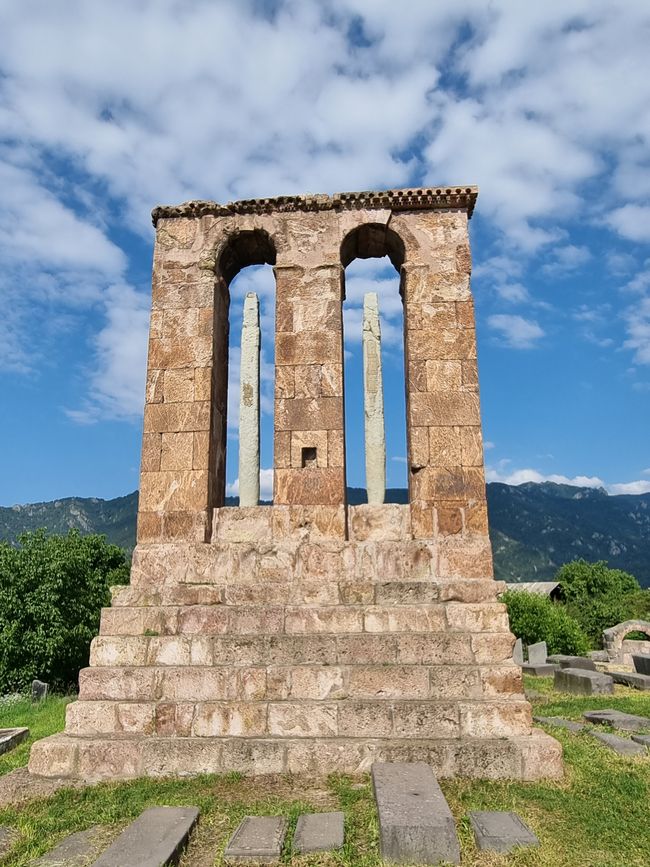
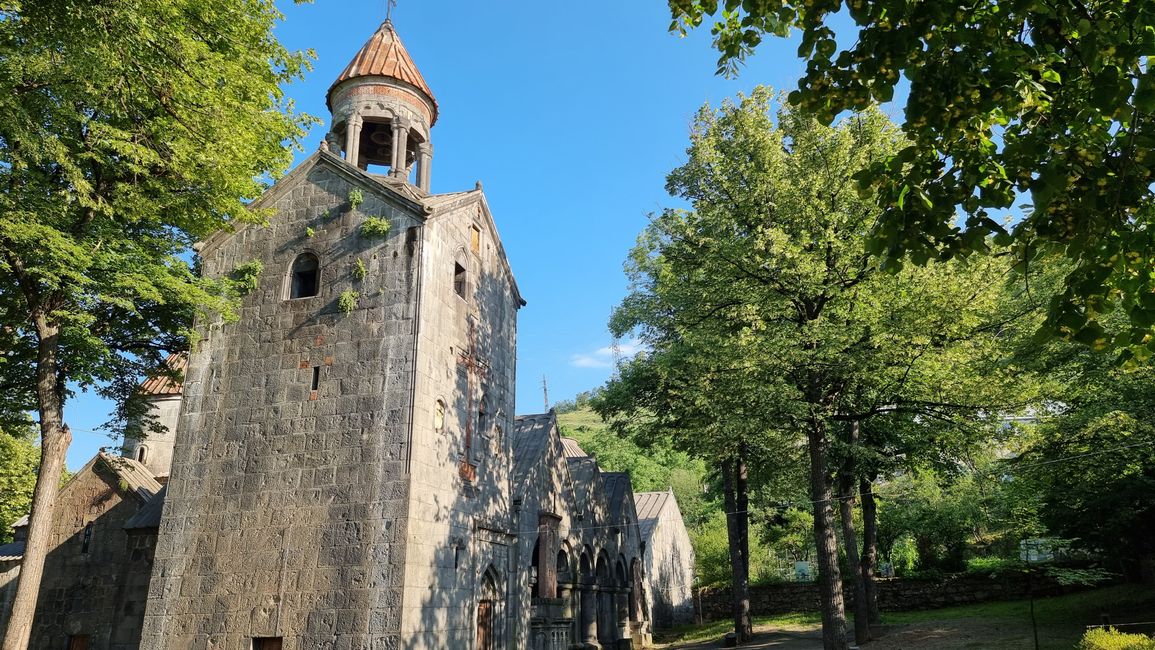
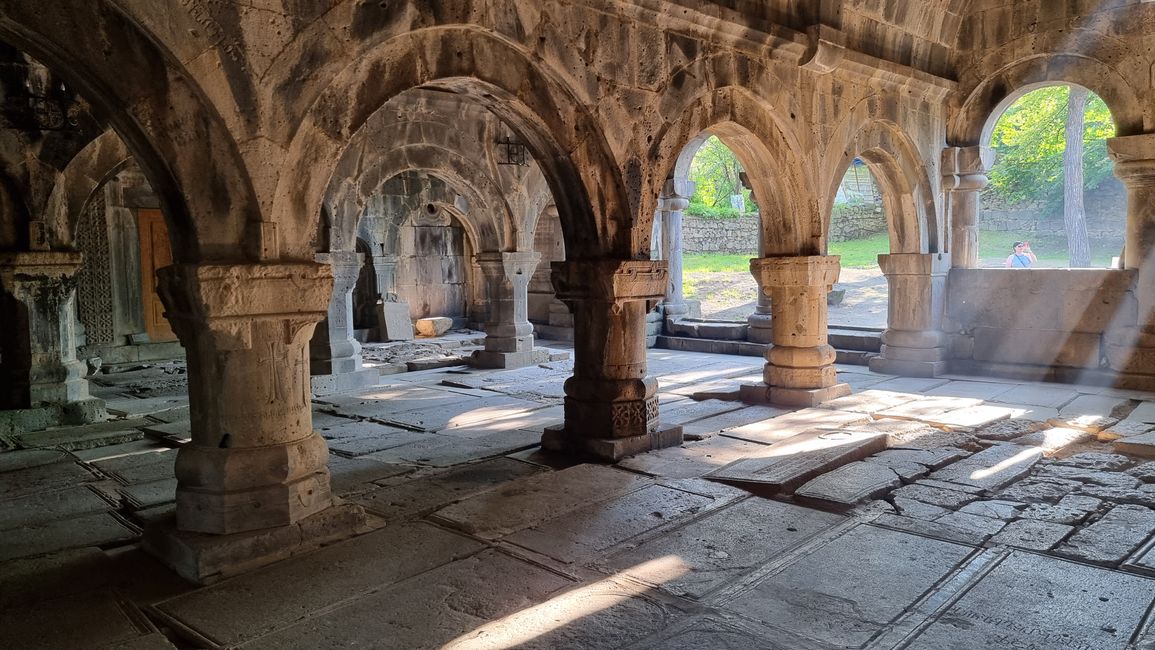
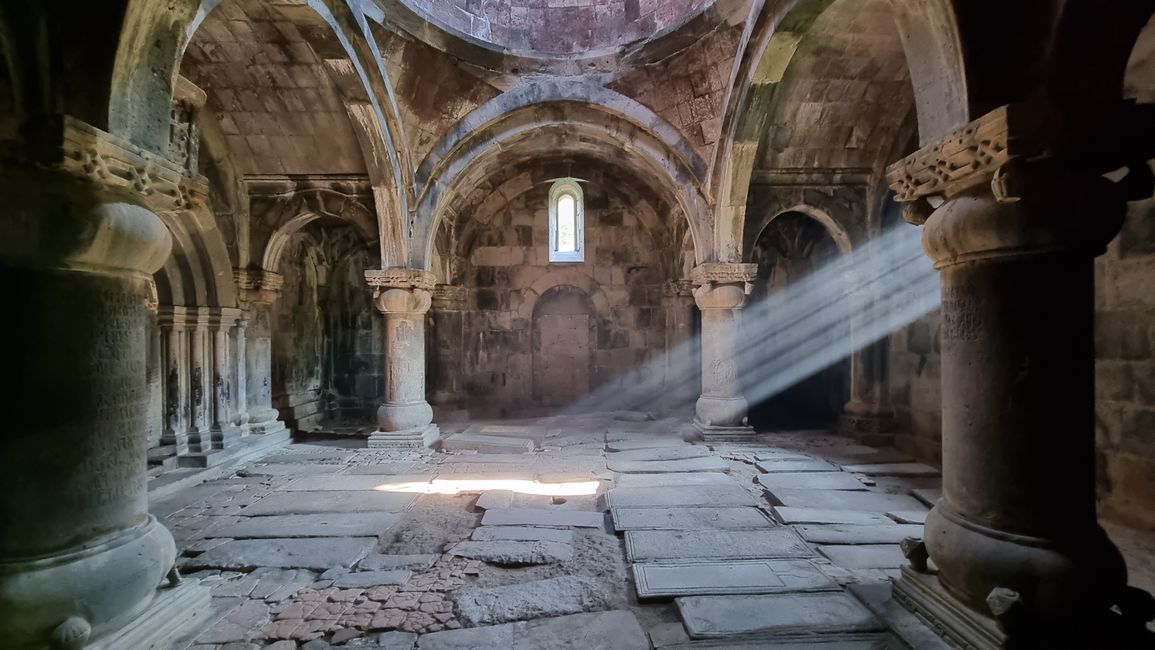
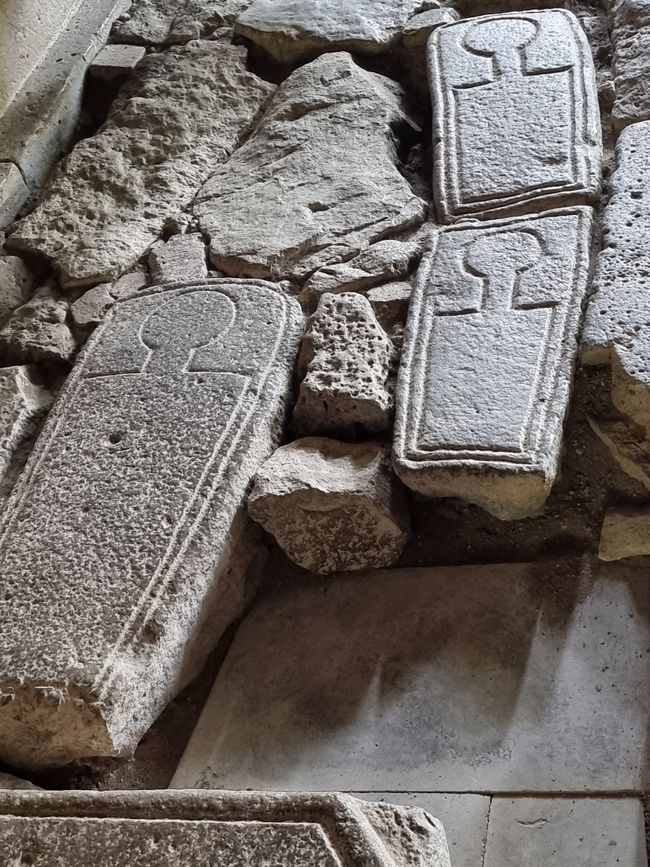
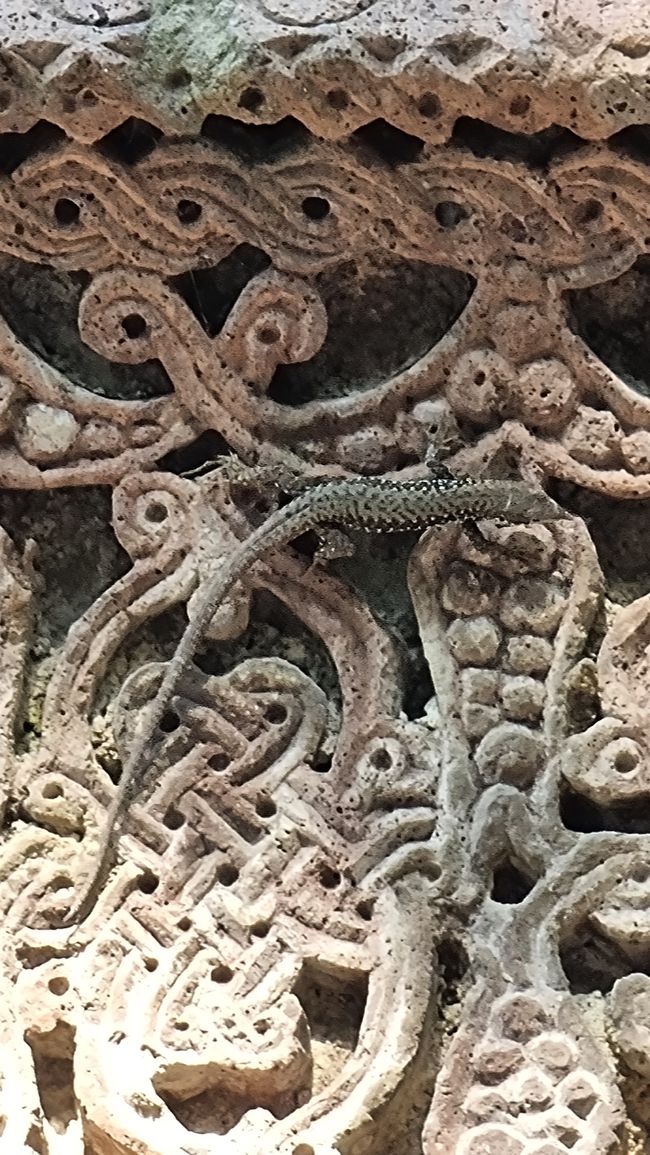
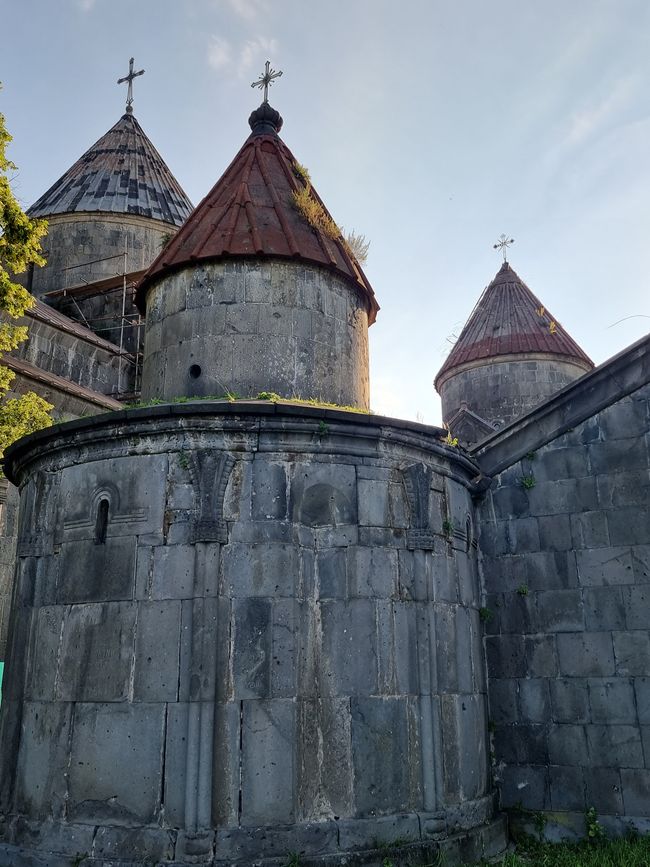
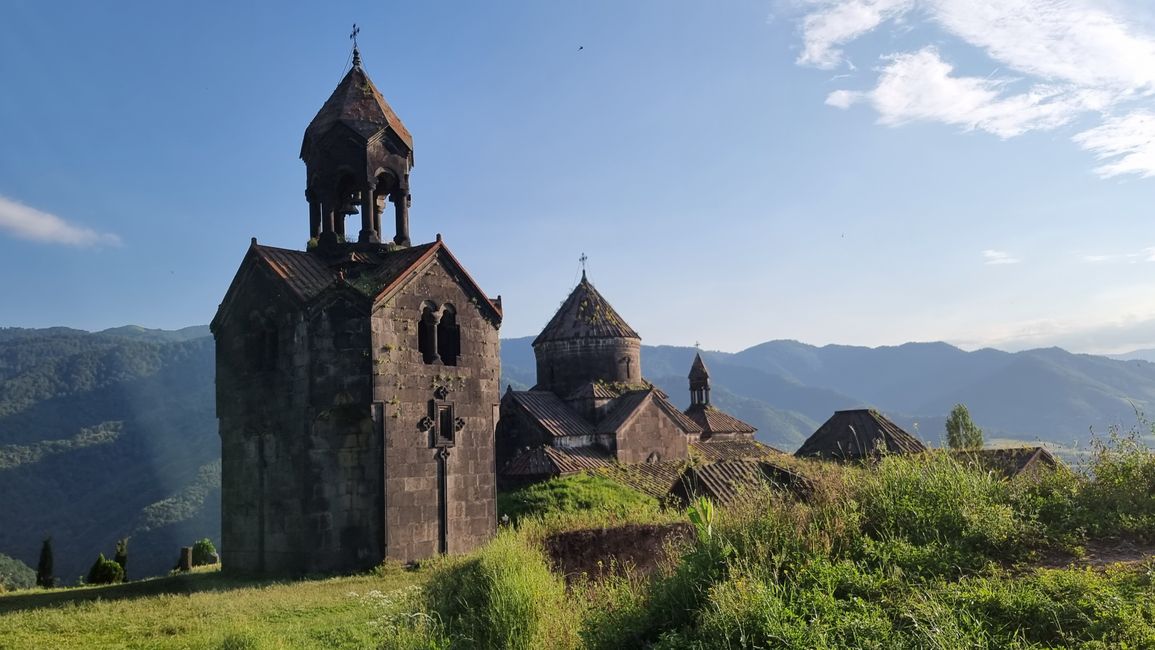
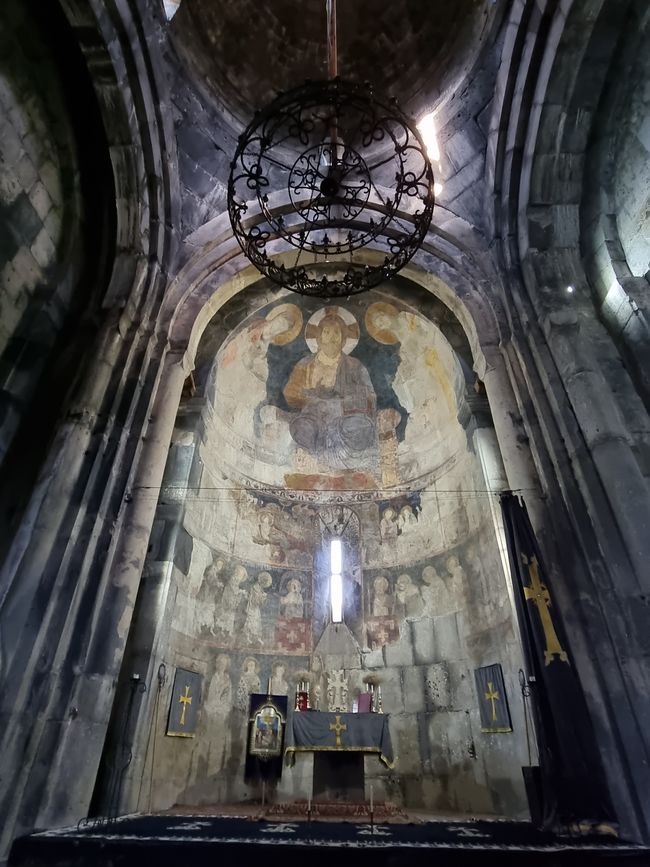
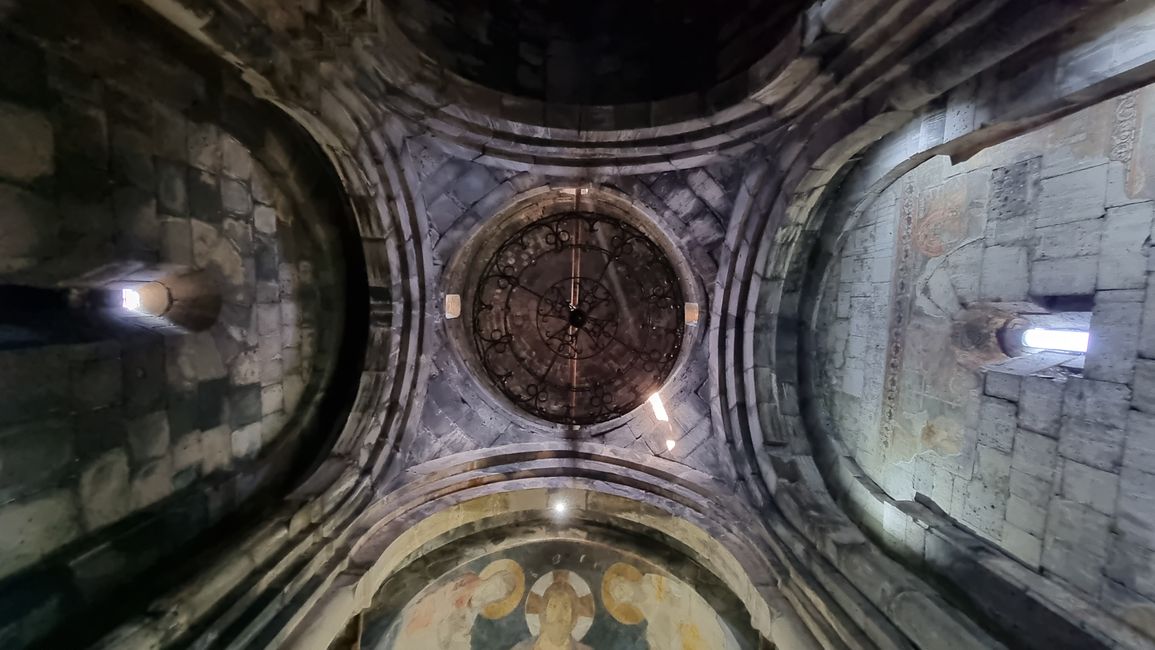
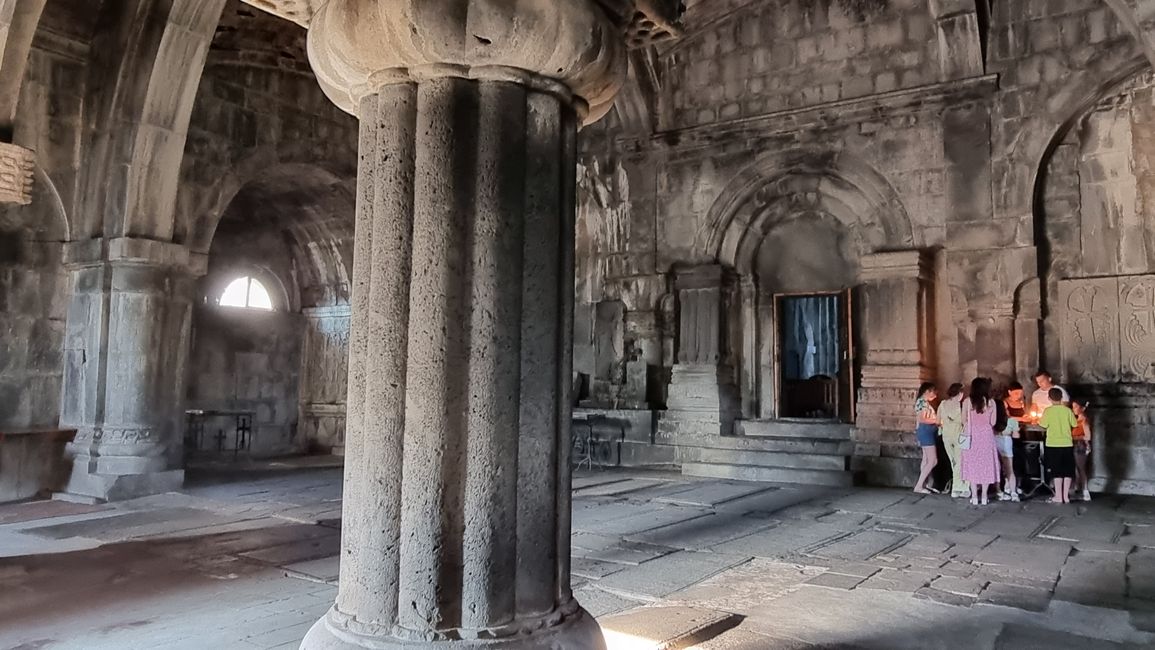
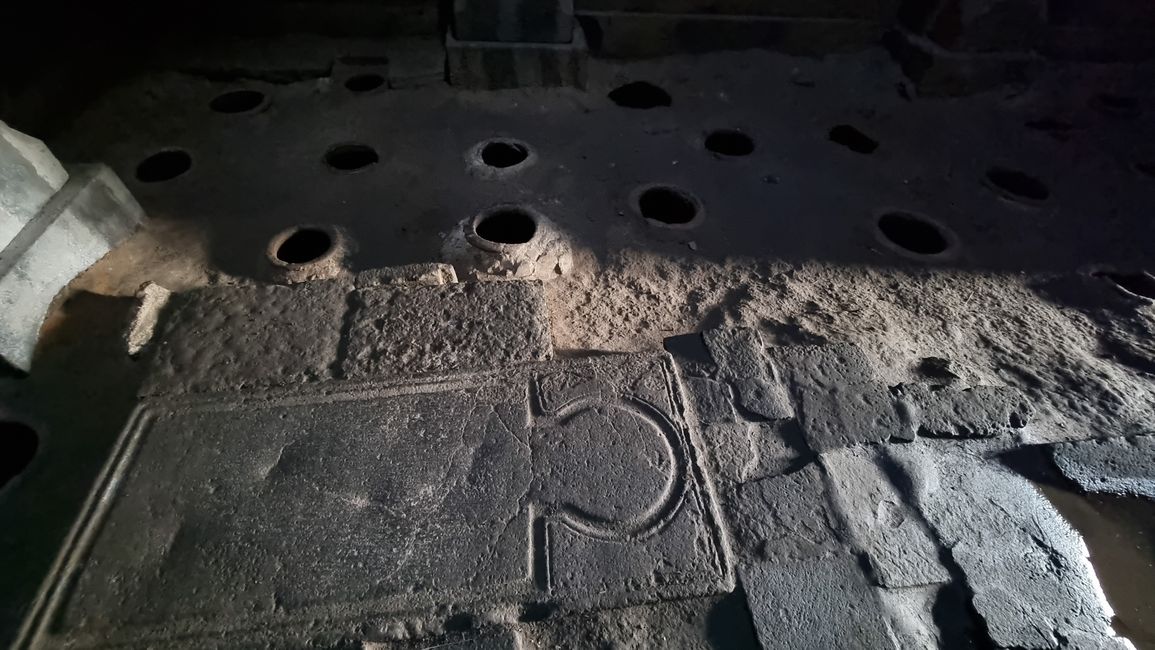
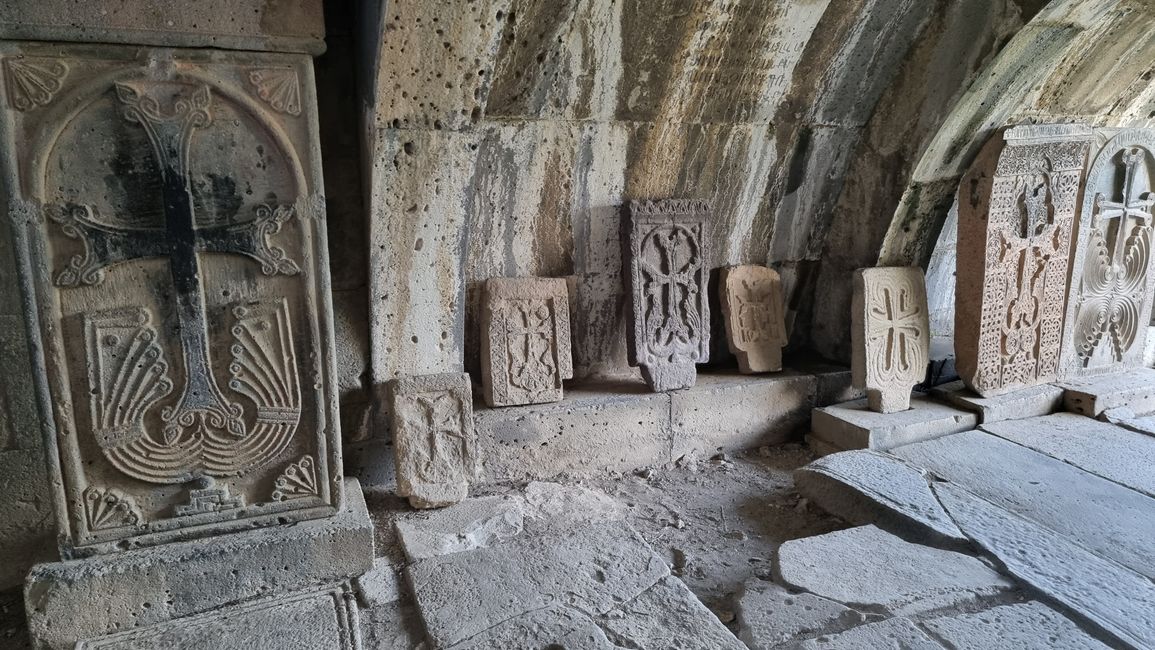
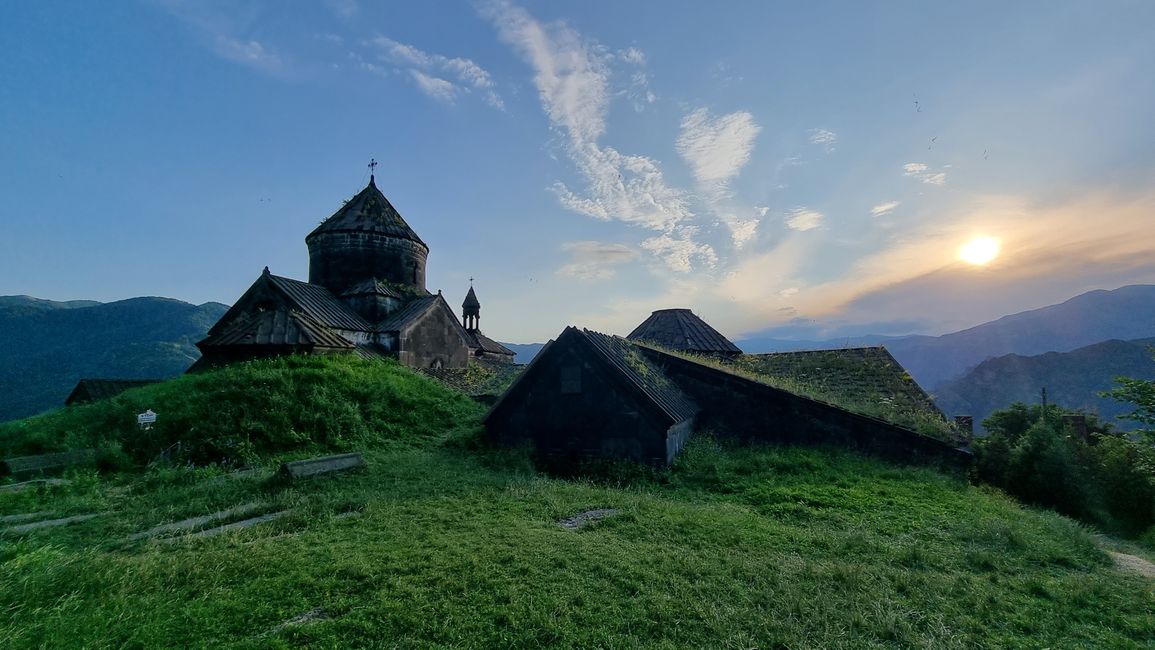
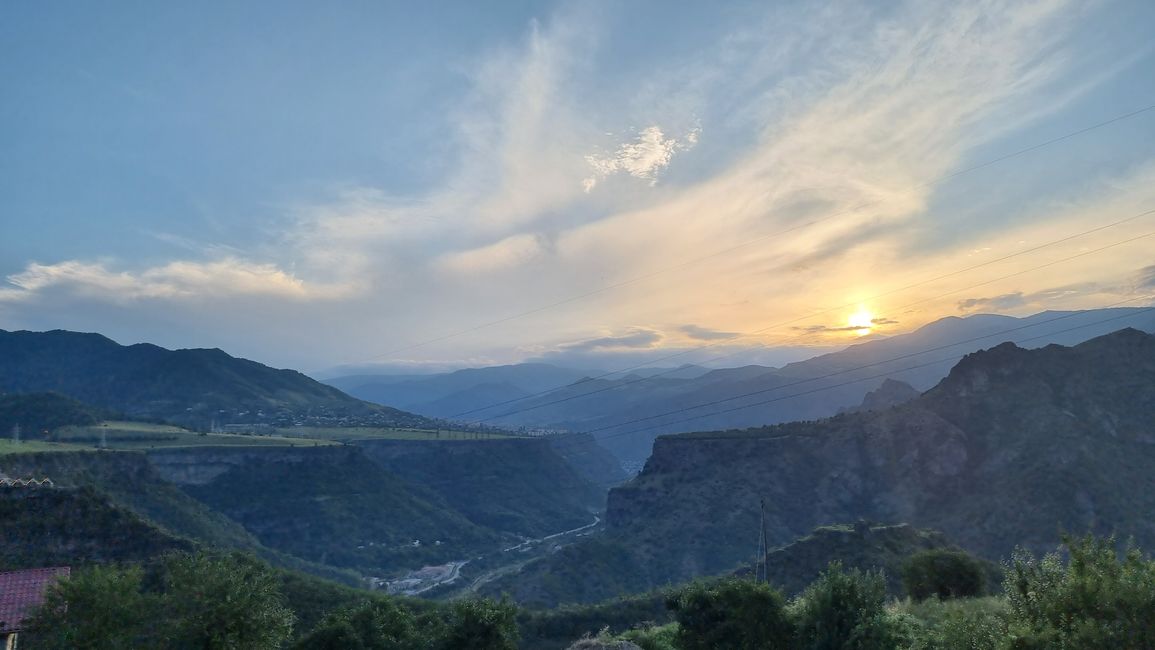
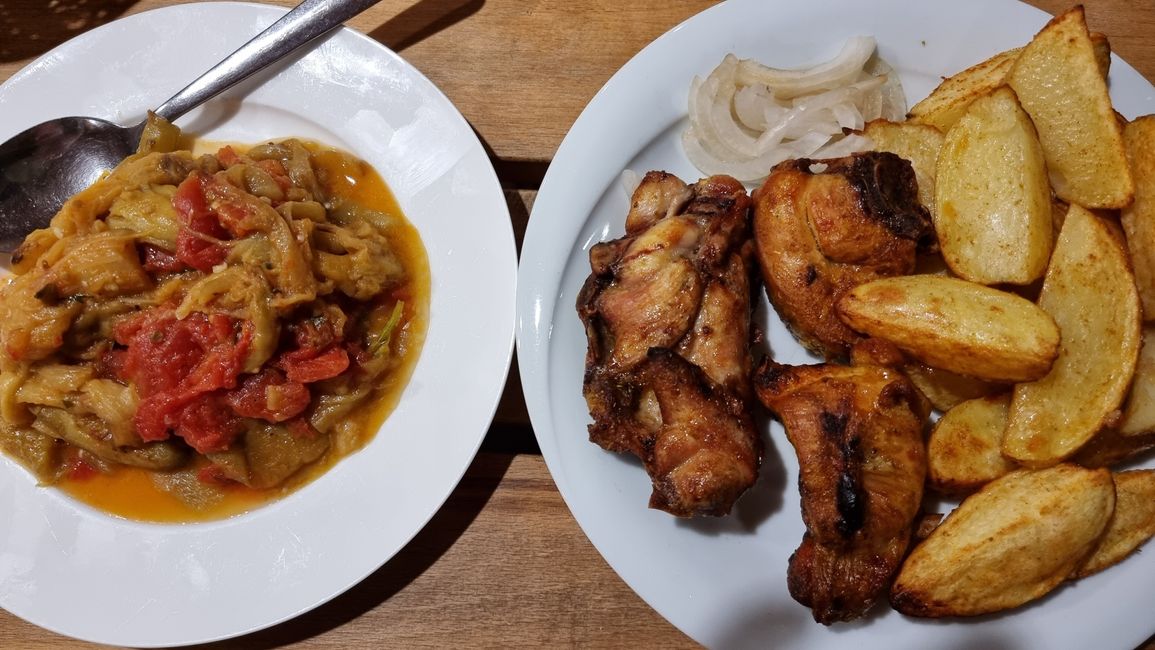

Don Curry was not sure. After his experience at the Azerbaijan border, his certainty about being able to make this cross-border journey diminished. Before the trip, his main concern was that Armenia might deny him entry if he had been to Azerbaijan before. This problem no longer existed. But could there be other difficulties? He would find out.
Don Curry shared the breakfast room at Hotel Siberia with numerous Indian families. Lately, he had noticed more and more that India is not only a country to visit, but also a country of travelers. As the middle class grows there, the world's most populous country is increasingly flooding tourist hotspots. Don Curry is glad to have already visited most of these hotspots.
Then he left Tbilisi and headed south. Before he could reach the border, there were still two monasteries and an archaeological site on his way. First, he visited the Zughrughascheni Monastery. Shortly before reaching his destination, an ancient church in a village caught his interest, so he had to stop. In fact, the St. George Church of Kverno Bolnisi dates back to the 6th century and was open to visitors. As is often the case, a relatively modern interior replaced everything that may have characterized the church in the past; but in this case, the current state could at least be described as tasteful. The Zughrughascheni Monastery is located, as expected, on a hill, but could be driven directly to the monastery gate. An quite old man approached Don Curry, but he did not understand English. When Don Curry revealed his actual origin, the man suddenly spoke a few words of German. The area around Bolnisi was known as a German settlement for a long time, until Stalin also destroyed the grown cultures here. Perhaps the old man had been able to preserve his knowledge of German from that time. The monastery church itself actually shines with elaborate relief work on its facades. A comprehensive scaffolding only allowed occasional glimpses of it. Don Curry could not enter the church.
His second monastery destination was the Sioni Church of Bolnisi, an astonishingly wide basilica dating back to the 5th century. Two nuns hurriedly came over to occupy the candle stand and sweep the church with a broom. The building impressed Don Curry mainly because of its dimensions and its old age. Additional decorations were not yet valued at that time. But even in this case, the current interior radiated an appropriate dignity. The nuns seemed to have a knack for gardening: numerous potted flowers or blooming cacti could be purchased.
The archaeological site of Dmanisi was supposed to be Don Curry's last sightseeing stop before the border. It seemed strangely deserted; even the ticket counter was unattended. But Don Curry was able to easily open the gate and enter the site. Immediately, two guards rushed towards him, who had probably been dozing in the shade of the trees before. The site is closed today, they made it clear. And Don Curry realized: today is Monday, the almost worldwide museum closure day. In order not to have driven up the road to Dmanisi in vain, he made a detour to the neighboring Marienkirche, which is also one of the oldest churches in Georgia, built in the 6th century. Behind the actual church rises a kind of burial chapel; ruins of the former fortress add even more picturesque atmosphere to the ensemble.
Now Don Curry could head directly to the border with Armenia. To his horror, he noticed that the well-paved road suddenly turned into a rough gravel track. Could this possibly not be an international border crossing? But after about 1 km, the asphalt returned and reassured Don Curry. At the border, there were 6 trucks ahead of him. Although there was no separate lane for cars, Don Curry simply drove past them, thanks to his experience with many borders, until a border guard signaled him to stop by hand. He was now standing right next to the front truck and waiting. And waiting. And waiting. For 20 minutes, nothing moved at the border. Then the truck next to him started the engine, but the border guard waved him on; he was allowed to drive about 50 m further to the Georgian border clearance. Don Curry had to hand in his passport, driver's license, Xerra's vehicle registration certificate (credit card format), and the notarized certification for the allowed border crossing of the rental car. Everything was thoroughly checked and many data were entered into a computer. The Georgian border guards then discovered that Don Curry had different first names in his passport and driver's license and constantly asked him for his correct name. Confused, Don Curry realized for the first time that his first name was misspelled in his driver's license; and he couldn't imagine how one could misspell 'Don'. The border guards also had some objections to the notarized certification. First, the responsible officer examined it intensively, then his superior examined it even more intensively, then he made a call; but in the end, Don Curry received all documents back. After a brief inspection of his trunk by a customs officer, he was allowed to leave Georgia.
A hundred meters away, the Armenian border station was already waiting for him. Here, the customs officer had priority and not only checked the trunk but also Don Curry's luggage, but was satisfied with the inspection. Don Curry was handed a white slip of paper and allowed to drive another 20 m. Now he went back to the counter, where a sullen-looking border officer was sitting. Once again, Don Curry handed over all his documents, and once again, all data were typed into a computer. In between, Don Curry had to state how many days he would spend in Armenia and the value of his vehicle. Then he was through here as well. The whole procedure proved to be time-consuming but trouble-free. Nevertheless, Don Curry is glad that in Europe, these border experiences have been overcome. After handing in the white slip of paper, he still had to go to the insurance office to take out the necessary insurance for Xerra in Armenia. For 10 days, it cost 4000 Dram or 30 Lari (= 10 €). In the next town, Don Curry immediately went to the nearest ATM and got 100,000 Dram. The adventure Armenia could begin!
Initially, the landscape did not change; it remained forested hills, with the tree cover noticeably sparser on the Armenian side. Later, lush green meadow hills dominated, as Don Curry knew from Tusheti. The change of countries had a noticeable effect on the road quality. In Georgia, Don Curry always had to expect potholes or speed bumps painted in yellow and black as a deceleration measure in towns, in Armenia, the density of potholes increased even further, and the speed bumps in towns had no warning color at all, so Xerra initially made violent jumps until Don Curry began to develop a certain sense for the presence of the nasty speed bumps.
But Armenia did not make it easy for him to win his sympathies in other ways as well. After 60 km, the first sightseeing highlight was on the program: the proud fortress of Lori Berd with its massive walls. But it was also Monday in Armenia, and access to the fortress grounds was therefore closed. Then Don Curry wanted to visit an architecturally original Russian Orthodox church, which has apparently been abandoned for years; even the roof had already partially collapsed. To get to the village of Kurtan, Don Curry had to leave the connecting road to Yerevan and trust in a provincial road. Now the road problems only really began, and Don Curry was relieved to have a SUV with him. In Kurtan, he briefly admired his first Armenian church, a village church that looked rather ancient but was locked. So he continued to the Hnevank Monastery. The provincial road there had probably been paved at some point in the early Soviet era, but now it consisted of more potholes than asphalt remnants. Without his Tusheti experience, Don Curry would probably have given up, but it could hardly get worse than the Tusheti tracks. So he drove or bumped on undisturbed. The Hnevank Monastery rose as a picturesque ruin on the edge of a deep gorge. Now he had to go down on the worst gravel tracks and through gigantic puddles and muddy sections, and on the other side, he went up again in many switchbacks. Where had he landed here?
At the top of the gorge edge, a well-paved road awaited him again, which remained faithful to him. In the village of Odsun, he could finally admire his first highlight in Armenia without any problems or restrictions: the mighty cathedral, which seemed too big for the village. The building dates back to the 7th century and radiates dignity externally with its warm glowing stones and internally through the vastness of the relatively dark space. In the apse, a large fresco of the Virgin Mary with Child had been painted in modern times. Here, Don Curry noticed for the first time that Armenian churches generally have benches or chairs, the altar in the apse is visible, and is probably only supposed to be hidden behind an adorned curtain during the liturgy. In addition, the Armenians' candle holders are filled with water, not sand like in Georgia. Next to the cathedral stands an unusual grave monument, consisting of two high steles within a double arch, and is probably even older than the church. Its origin and meaning have not yet been deciphered.
Gradually, Don Curry began to warm up to his new travel destination. So there were exciting things to explore. This was especially true for his next two destinations, which together form a UNESCO World Cultural Heritage: the monasteries of Sanahin and Haghpat. To reach the Sanahin Monastery, Don Curry first had to pass through the town of the same name, and someone had decided to dig up and renew not only the only access road but also all the important roads in the town at the same time. There are no regulations for the traffic that still exists. Either the vehicles have to find alternative routes themselves or they simply drive carefully through the construction site while work is being done. Again and again, despite Google Maps, Don Curry ended up in dead ends or had to reverse to let the equally desperate oncoming traffic pass. Finally, he ended up on the square in front of the monastery, which is completely surrounded by souvenir shops. Even on the stairs up to the monastery, you have to squeeze past various vendors until you step through a gate - and simply have to stop!
Here, there were many tourists, but they were all suddenly connected by an awe-inspiring silence. A whole ensemble of churches and other monastery buildings rose behind old trees, dominated by several towers. Everything reflected the warm light of the evening sun. When entering the first monastery rooms, Don Curry became aware that the floor was completely covered with tombstones. A monk went from room to room with a censer to take the sense of smell to this deeply spiritual place as well. Pleasantly melodic and yet somewhat exotic music of Armenian liturgies sounded from one of the churches. As a culmination of this incredibly dense, sensual atmosphere, Don Curry found the Gawit, the antechamber of every important Armenian church. Only two places let in light into this room supported by massive columns, and so concentrated that the light beam almost seemed mystical. Here, a gifted architect had really pulled out all the stops to give spirituality a solid form. In Sanahin, Don Curry also saw his first Kashgare, the famous cross-stones that are so typical of this country. After passing through all accessible rooms, Don Curry simply sat on a wall of the monastery courtyard for a while and silently admired this masterpiece of Armenian culture.
Unfortunately, a little of this deep satisfaction was lost to Don Curry when he had to struggle through the city again, but this time he at least knew the best way. Of the two monasteries that were still on his program today, he could only visit one due to the advanced time. But he didn't expect much anymore after this undeniable highlight in the Sanahin Monastery. He should be mistaken. At the highest point of the small village of Haghpat, the eponymous monastery rises, and when Don Curry climbed the steps up to it, he discovered an even more diverse monastery complex than in Sanahin. Numerous large and small churches, a mighty Gawit, a library, a refectory, a bell tower, various burial chapels, Kashgare, and much more were combined in such a way that something different could be found behind every corner and a spectacular view followed the next. In addition, the gentle hill landscape of northern Armenia spread around the monastery in the dark green of the forests. Don Curry couldn't get enough of wandering through the spacious rooms and constantly discovering something new. While the Sanahin Monastery stood more for concentrated mysticism and spirituality, the Haghpat Monastery allowed Don Curry to trace the diverse monastic life of past centuries. Here, Don Curry could fill up his tank of satisfaction overflowing.
His hotel was a short distance away; it was located right on the outskirts of Haghpat and could only be reached via an adventurous dirt road. At first glance, it looked like a modest house with few rooms. But after checking in, the owner of Hotel Qefilian personally led him through the huge dining room to another, larger building with hotel rooms; other buildings were still under construction, so that a handsome complex would be created in the foreseeable future. Don Curry's room offered a beautiful view of the Debed Gorge, and in the distance, he could even see the towers of the Sanahin Monastery.
When Don Curry started his first Armenian meal, the dining room was already busy. A large group of Americans had occupied a long table. But Don Curry was also allowed to sit at a window seat at a table for twenty. The menu only had partial English translations, but thanks to Google Translator, he managed well. However, this restaurant had also adopted the old socialist tradition of 'not available' and 'just sold out', although it could not have existed at that time. Similar to Georgia, there are no complete meals, but guests have to create a meal themselves from meat dishes and side dishes. Don Curry wanted to start with a lentil soup. 'Not available. Today, we only have rice soup.' Okay, then Don Curry took the rice soup from the rather large selection of soups, although it was not listed there; with some bread. Then a chicken barbecue plus fried potatoes plus sautéed vegetables. He was allowed to have all of that. He missed again with the 5 types of beer to choose from. 'Not available.' He could choose between Dargett and Dilijan. Since Dilijan is a nearby town, Don Curry chose this regional beer. He got the other one: a Dargett Apricot Ale CraftBeer. The service could certainly still be improved, but the served food was convincing. The beer also tasted extremely fruity and easy to drink. Presumably, the owner had noticed something about Don Curry's unsuccessful attempts to order. He came to his table and would like to offer him another beer as a sign of hospitality; could he? He could and brought Don Curry a Dargett wheat beer, also very drinkable. The drinks menu also included six different homemade vodkas. Don Curry wanted to order a Cornel vodka to finish off his Armenian meal. 'Not available.' There was only plum vodka. Don Curry resigned himself to his fate but was quite pleased with the delicious and extremely cheap drink (1 €).
His first day in Armenia had not been entirely smooth. The road conditions could often only be described as catastrophic. But he had fallen in love with the monasteries of the country right away. He would discover even more of them...
คำตอบ
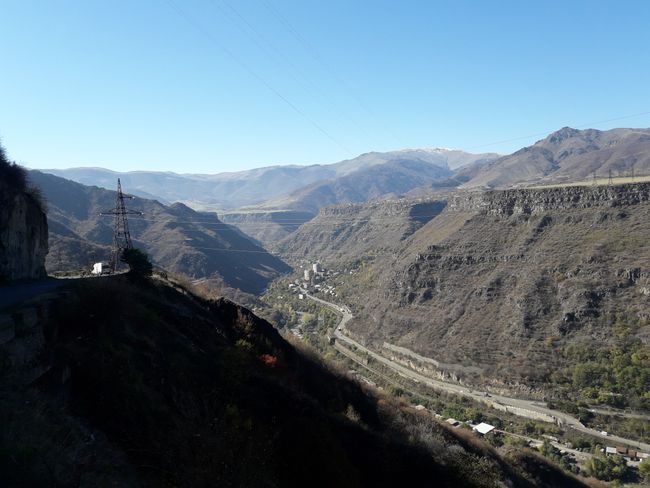
รายงานการเดินทาง อาร์เมเนีย

